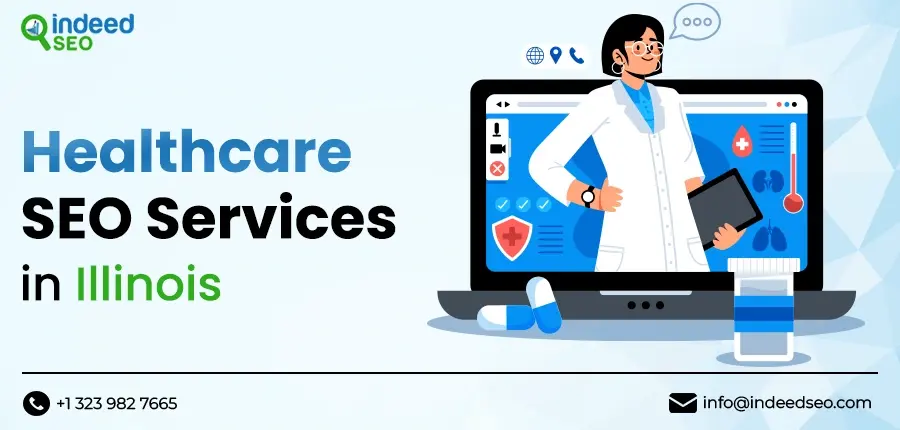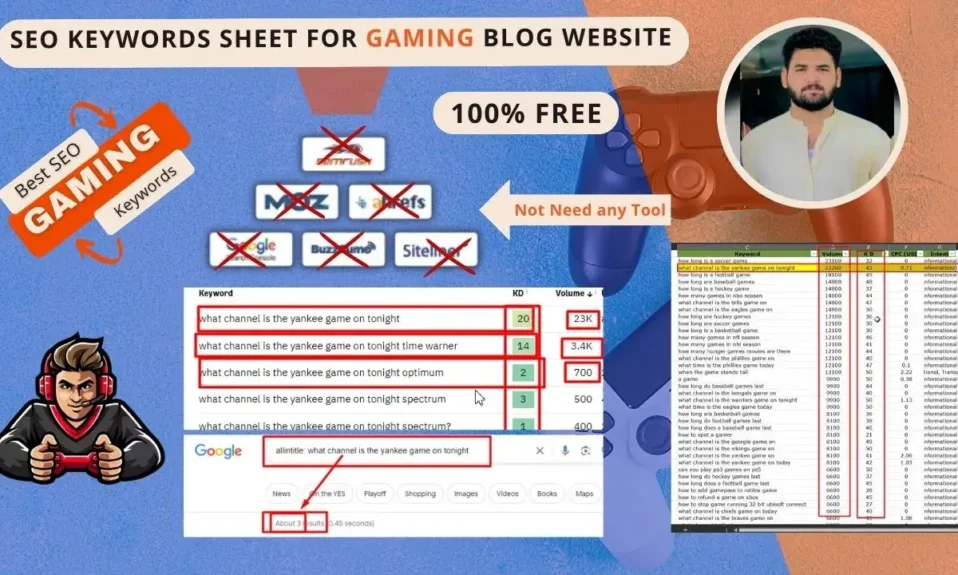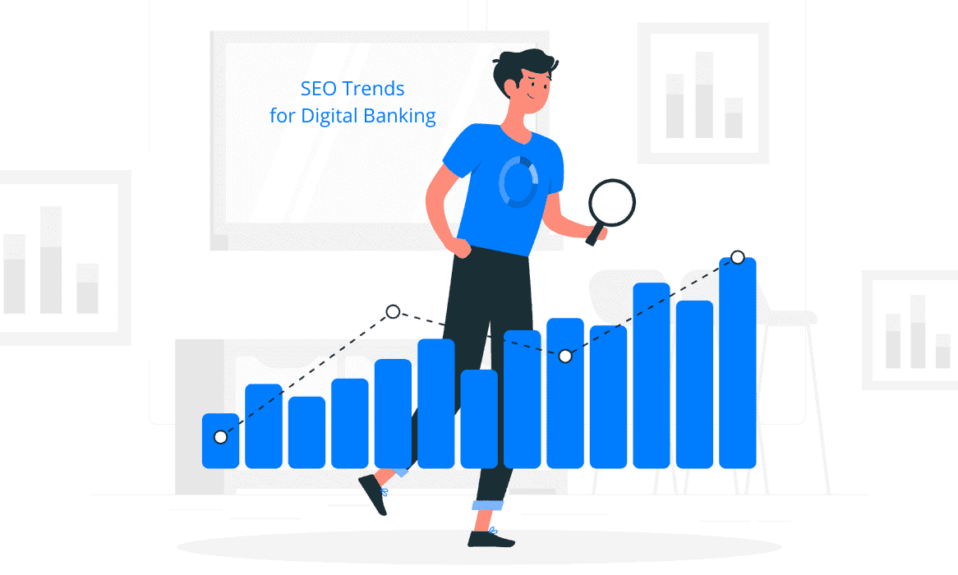
What makes website positioning totally different for information publishers? And the way a lot natural visitors may you be capable of drive as a information writer?
That’s what we’re going to be masking right now with a Springboks supporting Dutchman residing in Northern Eire. He’s a specialist in website positioning for information publishers at newsseo.io and is an website positioning advisor at Polemic Digital. A heat welcome to the In Search website positioning podcast, Barry Adams.
On this episode, Barry shares three key episodes of website positioning for information publishers, together with:
- It’s all about High Tales Containers on SERPs
- Velocity issues
- The headline is the important thing to optimization
Three Key Parts of website positioning for Information Publishers
Barry: Thanks very a lot for having me, David.
D: You’ll find Barry over at polemicdigital.com. So right now, we’re speaking about website positioning for information. So why is website positioning for information publishers totally different?
B: It’s a really fascinating house to be in in terms of information. While you’re speaking about traditional website positioning, we discuss long-term actions to construct up high quality indicators, to construct hyperlinks to an internet site, to enhance content material, and subsequently enhance rankings, which then leads to extra visitors. A variety of that also applies to information publishers. They nonetheless must construct up these high quality indicators over time they usually must construct up authority. The important thing distinction that information publishers have versus every other web site in Google’s ecosystem is the pace with which information strikes.
While you publish a information article, it’s going to both rank or not rank in Google inside a couple of minutes. And that’s typically within the High Tales field that we see as a part of common search outcomes. About one in ten search outcomes on Google may have a High Tales information field of some description, some larger than others, relying on how widespread the information tales round that individual matter are. That is very totally different from an e-commerce web site or one other content-driven web site that’s not information, while you publish a brand new piece of content material, you don’t count on it to rank inside a couple of minutes, that may be fairly uncommon. However for the information, that’s your golden alternative for visitors from Google. The primary few hours after you’ve revealed the article is when many of the visitors from Google to that article will come. And the shelf lifetime of an article in Google’s information ecosystem, which is their High Tales field, the information.google.com vertical, in addition to the Information tab on common outcomes, is about 48 hours. After that, the article will drop off as a result of it’s not information anymore and new articles will take its place.
And that’s what makes website positioning for information very a lot totally different. You get one shot at rating in Google’s information ecosystem. And in the event you don’t handle that, going again later to tweak the article and the content material, which is one thing we are likely to do in traditional website positioning, is nearly pointless as a result of the information has already moved on. And the article might be not related anymore. In order that’s what offers information publishers very distinctive challenges in terms of website positioning and optimizing for that preliminary view.
D: So that you discuss Google’s information ecosystem, how do you truly grow to be part of that ecosystem as a writer?
How do you qualify as a information writer? B: That’s a troublesome nut to crack. It was comparatively easy. As a information writer, after all, you needed to be a correct information web site. As much as the top of 2019, there was a handbook type you needed to submit. And there have been some individuals in Mountain View California who took a take a look at your web site, after which manually accepted you for inclusion in that information ecosystem as a information writer. These days, nonetheless, it’s an algorithmic course of. This implies Google will mechanically detect whether or not or not you’re a information writer, and whether or not or not you need to rank in these particular rating components that Google has throughout all kinds of its companies, as we name them, just like the information app, the Google App usually, search outcomes, each cellular and desktop, Google Information as a vertical, in addition to the Uncover feed on Android telephones and within the Google App on iPhones. That algorithmic inclusion course of may be very opaque. We don’t actually know what Google is in search of, moreover some very generic suggestions and pointers that they’ve put on the market prefer to be a correct information writer. So it’s grow to be very exhausting for web sites to persistently obtain that visibility in Google.
Solely within the final 12 months or so have I seen web sites that weren’t manually accepted within the outdated course of beginning to get traction in Google Information. So it’s taken them about two years of constant effort for Google to acknowledge them as a legitimate information writer and information supply, whose articles ought to rank in these information components throughout Google’s ecosystem. It has made it so much more durable and created a little bit of an unfair enjoying subject the place web sites that have been accepted within the outdated handbook course of proceed to look in High Tales and Google Information with no actual effort. And new publishers are actually struggling to get traction in Google Information.
It’s an fascinating dynamic we’ve in the mean time the place the outdated publishers are getting a free trip and the newer publishers from the final two years are actually struggling to get traction. They don’t have loads of recourse as a result of there’s not loads of documentation. And there’s not loads of readability about what the algorithm course of is definitely in search of.
D: What actually annoys me in the mean time is clicking on information tales and Google Information and that almost all of hyperlinks are likely to have a pay-to-play scenario occurring. So while you click on by you may solely examine two strains of the story after which you must truly pay. It’s not a beautiful person expertise. Is Google going to do one thing about that?
B: Most likely not, if I’m trustworthy, Google particularly doesn’t penalize paywalled web sites in its information ecosystem, as a result of it doesn’t need to be seen to steal much more cash away from publishers. Google is already being accused on a number of ranges of robbing publishers’ incomes. And if they may say that subscription-based web sites will not be going to rank as excessive in our High Tales and in Google Information, then Google will get much more warmth from them. Google is looking for methods round this with the Google Information Showcase the place publishers which have a paywall can signal as much as a mannequin the place Google will present content material free of charge to the customers of the Google Information app and in flip Google will give them a share of the income. There are additionally different mechanisms in place doing comparable issues.
However yeah, usually, trying to find information might be an annoying person expertise. Should you click on on an article, and also you don’t know that it’s a paywalled article, there’s no visible clue there that it’s a paywall article, and then you definately get hit by the paywall, after which most customers will click on the again button. However I believe Google very intentionally doesn’t visually point out that it’s a paywalled article as a result of they don’t need to be seen to be favoring free information web sites in case they get accused of all types of nefarious shenanigans. And the information business and Google have had a reasonably eventful relationship anyway, within the final decade or so.
D: So right now you’re sharing three key components of website positioning for information publishers. Beginning off with primary, it’s all about High Tales bins on SERPs.
1. It’s All About High Tales Containers on SERPS
B: That is at all times a enjoyable one. When a writer says we would like visitors from Google Information, they don’t truly imply Google Information as within the information.google.com vertical. As a result of that vertical alone, that separate web site, often accounts for a low single-digit proportion of visitors to a writer, like 4 or 5% at most. Additionally they don’t imply the Information tab, or the common search outcomes, which is also about 4 or 5% of visitors to most publishers. These High Tales bins on the common search outcomes, that’s the place the magic occurs. That’s the place most information publishers will get their Google natural visitors from. For lots of publishers, this may be as excessive as 40-60% of the complete internet visitors coming from these High Tales bins. That is along with the social visitors that they get, direct visitors, bookmarks, and exterior hyperlinks. So Google has an enormous affect general on the quantity of visitors the publishers can get based mostly on whether or not or not they’re seen in these High Tales bins.
So for publishers, it’s completely key that they optimize their articles for visibility in these High Tales bins, in order that they’ve probability of showing there when somebody sorts in a given search. And the explanation these High Tales bins are extremely highly effective is that about one in ten most typical Google searches may have a High Tales field of some description that exhibits some information articles which might be as little as one article or as many as 15 articles in a High Tales field. So one in ten Google searches may have a High Tales Field and Google handles trillions of searches a 12 months. So we’re speaking about a whole bunch of billions of searches that occur on Google which have a information aspect to them. And that’s why they’re such an enormous supply of visitors for publishers, an infinite quantity of stories being shared as a part of Google’s common search. outcomes. And if you may get visibility there as a writer, the visitors potential is gigantic.
D: I assume you’ll be masking just a few alternative ways to look in these bins in your subsequent couple of factors as a result of level quantity two is that pace issues and articles have a 48-hour window to rank in High Tales.
2. Velocity Issues
B: Completely. This is without doubt one of the fascinating areas the place publishers can type of exploit Google’s weak point in information a little bit bit. Like I mentioned earlier than, the 48-hour lifespan of a typical information article in Google’s information ecosystem, together with the High Tales field, is often lower than that. 24 to 36 hours is kind of the utmost you may count on for an article to point out up in these High Tales bins. Except it’s a very talked-about information story, with loads of publishers writing content material about. Google does have a desire for newer articles in High Tales, which is an fascinating dynamic. The place some publishers break a narrative and are the primary one to report a narrative however they typically in a short time lose rankings to publishers who cowl the story that they broke as a result of these publishers are later and subsequently their tales are more moderen. Google has tried to mitigate this to a sure extent by making an attempt to spotlight unique publishers as a lot as they will detect them. However it’s very exhausting for Google to try this. As a result of the pace side performs such a giant position in a number of sides. It’s not simply you as a writer must publish content material. It’s additionally Google having to in a short time index and rank information articles.
Once more, I’ll evaluate this to traditional website positioning. With traditional website positioning, Google principally can take its time when it crawls an internet site and indexes new content material. It typically renders the content material in a headless browser to get an entire image of the person expertise. It does all types of deduplication and canonicalization, and it tweaks its index. For information articles, Google doesn’t have the time to do all of that. It doesn’t have the luxurious of leisurely processing all these totally different processes of its indexing system. So Google takes shortcuts. Google by no means explicitly says this. However in the event you learn the documentation, in terms of information publishers, there are loads of delicate and not-so-subtle hints that Google has to take shortcuts in terms of indexing information articles. They particularly say article content material needs to be within the pure HTML supply and never depend on client-side rendering, which signifies Google most likely doesn’t render as a part of information indexing. Additionally they say that articles needs to be unique content material. And if it’s a syndicated article from one other supply, principally duplicate content material from one other supply, it is best to have a canonical tag or forestall Google from indexing it. That’s most likely as a result of Google doesn’t have the time to do its personal deduplication as a part of indexing as a result of it in a short time has to rank articles in its search outcomes. And there are loads of hints like this as nicely, that exhibits that Google principally indexes information articles in a short time, and doesn’t have time to do all these different further processes that it does as a part of its regular indexing of content material. That enables publishers to principally exploit Google programs as a result of that lack of thoroughness in terms of indexing information additionally means there are home windows of alternative there for publishers.
I’ll provide you with a really fundamental instance. On the subject of new tales, Google seems on the URL of an article because the distinctive identifier. Not the headline, not the title tag, not the web page content material, simply the URL. The URL is a singular identifier, which suggests in the event you change the URL of an article and that’s the solely factor you alter, all the things else is identical, the headline, content material, picture, you identify it, simply change the URL, Google will see it as a brand new article and can index it and rank it as a recent article. That may be a weak point. And that weak point solely exists within the information ecosystem, it doesn’t exist in every other a part of Google’s ecosystem. And publishers can exploit that a little bit bit. In the event that they need to give the story a little bit of a lift in High Tales, they wrote story, it misplaced rankings as a result of rivals are writing new tales on that very same growth, you may simply change the URL of your article, or perhaps additionally change the final up to date date or the publish date simply to be a bit extra thorough about it, and Google will typically choose it up as a brand new article and rank it as a brand new article in High Tales. That’s the place that pace aspect comes into play. You as a writer must be quick and Google must be quick. And that’s a really fascinating dynamic that makes website positioning for information publishers fairly a special sport for website positioning for traditional web sites.
D: And your level quantity three is that the headline is the important thing optimization. What’s an ideally optimized headline? What does it appear to be?
3. The Headline Is the Key Optimization
B: That is at all times a enjoyable one. Once more, in traditional website positioning, we take a look at title tags as a major on-page website positioning aspect. And within the information, the title tag is nearly irrelevant. Google seems on the article headline web page, particularly the headline that’s a part of the article construction information within the supply code. Once more, it’s because Google has to take shortcuts when it indexes information articles. So it simply seems for the H1 tag, if it has one. And it seems for the headline attribute of the article or the information article structured information snippet that exists within the HTML supply code, which is required. You have to have an article or information article construction information within the supply code, in any other case, Google is not going to see you as an article.
And that headline attribute is a very powerful rating issue. That determines whether or not or not you present up in High Tales, mixed with the long-term high quality and relevancy indicators that your area has constructed up over time, based mostly on what you write and the sorts of hyperlinks that you just get, and so forth. However for a person article, it’s the headline, and the headline is so priceless. It’s important to pay loads of consideration to the way you craft it as a result of Google continues to be a machine. And once more, right here’s the place the pace side comes into play. Google doesn’t have loads of time to correctly course of your headline and take a look at all of the context of the headline, it principally simply seems on the key phrases in your headline. It’s a reasonably old-school method to website positioning.
D: Is there anyplace that you would be able to go to establish the key phrases which were widespread within the final six hours, for instance?
B: Sure, there may be truly, Google Traits has a real-time traits possibility for many nations on this planet the place you see what’s trending at any given time in the previous couple of hours in any nation. You may keep watch over that in real-time to see what’s taking place and whether or not or not it’s one thing that you just need to write about as a writer.
On the subject of crafting the headline, you could be pretty specific. You have to particularly state the key phrase throughout the headline in order that Google understands that that article might be ranked for that key phrase. You don’t need to be too delicate about it. You don’t need to be humorous about it. You don’t need to put any phrase puns or intelligent jokes in headlines. They could work within the context of a print newspaper, however they actually don’t work in Google. It’s important to be very specific in what your article is about. Particularly point out individuals, locations, names of occasions, nations, and so forth. It’s important to be pretty clear with the headline and what the article goes to be about in order that Google is aware of when it might rank that article or when the article will not be related.
The Pareto Pickle – Simply Write Good Content material
D: Let’s end off with the Pareto Pickle. Pareto says you may get 80% of your outcomes from 20% of your efforts. What’s one website positioning exercise that you’d suggest that gives unbelievable outcomes from modest ranges of effort?
B: That’s at all times the powerful one, we at all times need the silver bullet method, don’t we? What I discover truly labored very well in my very own context is I’ve type of stopped worrying about issues like hyperlinks. And to a sure extent, in terms of a smaller web site, I additionally stopped worrying about what know-how stack I construct it on. I’ll provide you with an instance. I launched a publication, seoforgooglenews.com, which runs on Substack, which is fairly first rate as a platform. It has sure capabilities, but in addition sure limitations but it surely does all I would like it to do for website positioning functions. It ticks the bins, it will get ranked, listed, and +++by Google pretty nicely. So I don’t have to fret an excessive amount of about optimizing the technical website positioning. The trouble I put into that’s fully concerning the content material. I simply deal with writing the absolute best content material that I can on that individual matter, on this case, optimizing information web sites for Google Information. And that has truly resulted in that area getting actually good rankings from Google in a few 12 months and a half since I began that publication, off the again of perhaps 12-13 newsletters, I haven’t written an terrible lot of them, lower than one a month actually. However as a result of the content material is nice sufficient, and oftentimes, sorry to toot my very own horn a little bit bit, it’s the very best content material on that matter that anyone’s ever written. That’s not as a result of I’m so good, it’s as a result of Google Information as a distinct segment is pretty under-serviced. There’s not loads of content material on optimizing for Google information on the market. So any content material, so far as Google is worried, is nice content material.
So for me, 80% of the outcomes got here from 20% of the trouble of simply writing good content material with some regularity in publishing it and infrequently selling it. And the hyperlinks have come of their very own accord. The calling and indexing are already sorted by the topic platform. So I simply deal with the stuff that I need to do, which is to put in writing good content material. And I believe if extra web sites do this if they simply deal with offering the absolute best content material that they will do, the remaining tends to simply fall into place.
When you get to a sure stage of maturity and competitiveness, then the small little aggressive enhancements right here and there could make a very huge distinction. Should you do journey or finance or one thing like that it is rather aggressive. Simply having the very best content material alone will not be sufficient. That’s the place you could get the 1% enchancment right here and there to essentially squeeze out the utmost. However in the event you’re simply beginning out as a enterprise, and even in the event you’ve been round for some time however you’re looking for that subsequent stage that basically units you aside out of your rivals, simply deal with the form of content material that you just’re offering to your customers and the remaining can await a bit till you get to that prime stage the place you’re feeling you may’t squeeze something extra out of your content material.
I believe that’s an underappreciated side of website positioning. Persons are nonetheless in search of that silver bullet, that magic unicorn mud they will sprinkle over the web site, and voila, they go to the highest of Google. They don’t notice that they must put within the effort to create one thing that’s price rating within the first place.
D: Nice recommendation. Barry, thanks a lot for being on the In Search website positioning podcast.
B: Thanks very a lot for having me, David.
D: And thanks for listening. Try all of the earlier episodes and join a free trial of the Rank Ranger platform over at rankranger.com.
#Search #Podcast #website positioning #Information #Publishers












